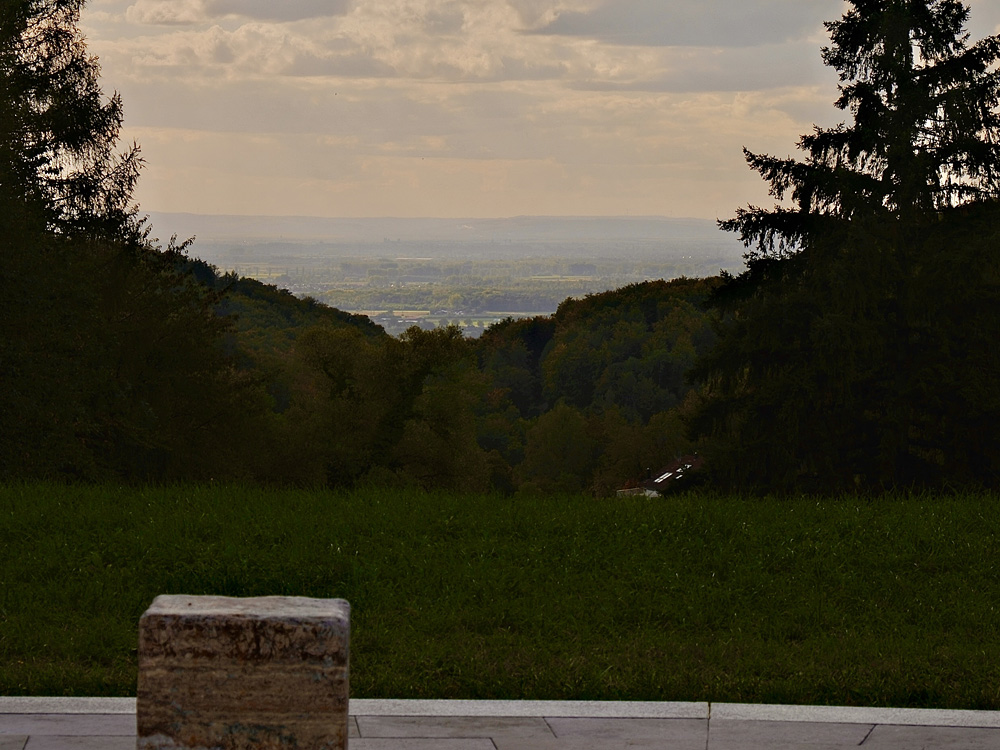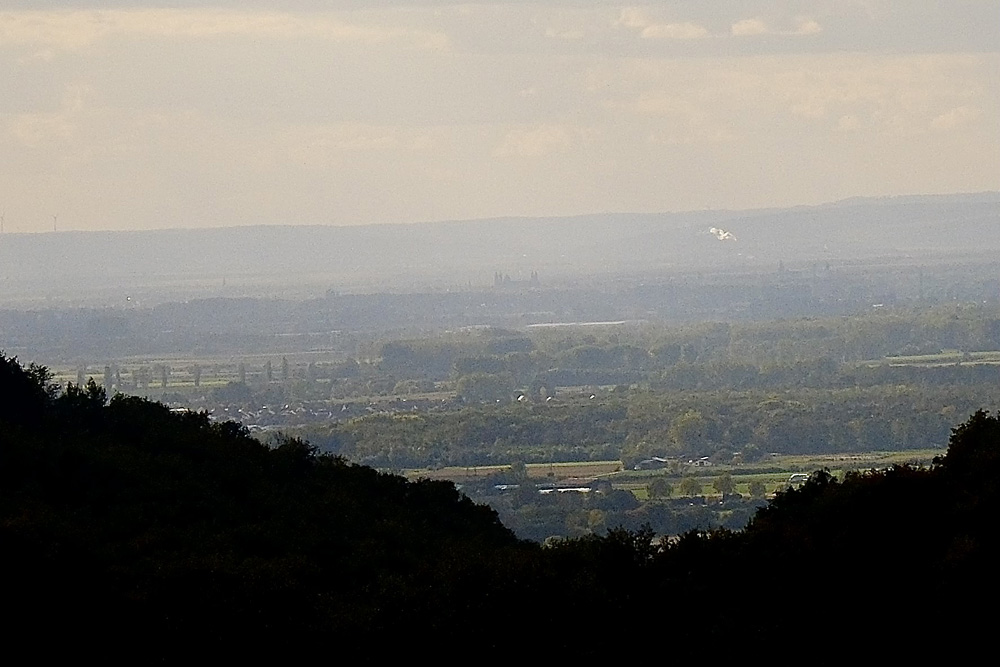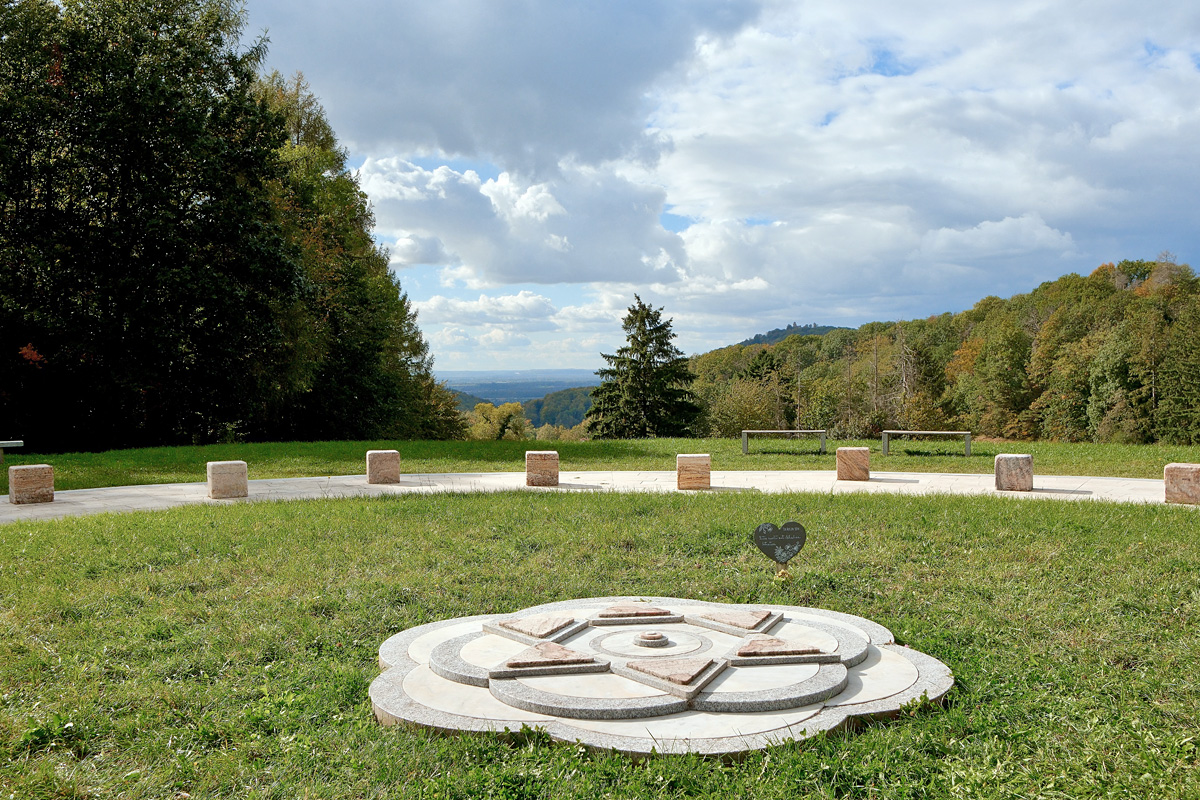The view from the Friedensmal into the Rhine plain with Worms on the horizon (22 km), the 'Jerusalem on the Rhine' in the High Middle Ages.Chapter: About the place / Jerusalem on the Rhine
The entire design consisting of the Friedensmal (monument) in the Garden of Freedom and the Stone of Encounter on its border was given the spiritual name "Jerusalem Friedensmal" on the Frontpage of the Jerusalem Post on March 22, 2013. It was only a few years later that I learned of a new initiative by the cities of Worms, Speyer and Mainz, which had applied to UNESCO for recognition of their Jewish past as a World Heritage Site. This Jewish heritage had not been known to me before. From the Jerusalem Friedensmal on the hill you look down onto this area, which is even called "Jerusalem on the Rhine"; what a coincidence! All of a sudden, the name I found from the inner meaning of the monument was given an external meaning through life itself.
Since the name 'Jerusalem Friedensmal' (Jerusalem Peace Monument) was not accepted in politics and administrations, nor by Christian or Jewish organizations, the monument, in the 26th year since the project's inception, was named the 'Friedensmal of Change'. This consists of the 'Friedensmal' in the 'Garden of Freedom' and the 'Stone of Encounter'. This change elevated the project to an interreligious level with a universal message. The relationship to 'Jerusalem on the Rhine' is now shaped through the '(Jerusalem) Stone of Encounter', on which the information panels address this Jewish history in Germany.
The SchUM-Cities
The roots of the Tree of Life within the Friedensmal point towards Jerusalem in the East. The Blossom of Life is located at the heart of the Tree of Life. Looking from here to the west in the Rhine Plain, the city of Worms with its large cathedral can be seen on the horizon. It is the middle of the Rhine towns Speyer, Worms and Mainz. Because of their central importance for the Jewish communities in Central Europe, they are considered the birthplace of the Ashkenazi Jewish culture in the High Middle Ages and they are also referred to as Jerusalem on the Rhine” (film in German state TV, 45 minutes).In Jewish sources, the three cities of Speyer, Worms, and Mainz were named for the initial letters of their Latin names SchUM-Cities. By persecuting the Jews and destroying their communities as part of the Crusades, the SchUM culture perished. In modern Jewish historiography, this was also referred to as the first anti-Semitic event that resulted in unforgettable consequences with the Shoah at its climax (reference).

At the center of the image, between both hills, the cathedral in Worms can often be seen with the naked eye.
The Friedensmal is a positive example of a forward-looking commemorative culture. A future in dignity and freedom is possible if we confront the past. It means making peace with the past because a responsibility for it comes into being in the present. With regard to the Schum-Cities you can see the coherences that have been reflected in history for a long time. This project relates to the fundaments.The very beginnings of the Jewish-German relationships need both recognition and peace.

A view from the Blossom of Life within the Friedensmal. The cathedral is clearly visible with binoculars.
The atrocities in the German relationship to Judaism are going way back. The SchUM culture in the cities Speyer, Worms, and Mainz on the Rhine was so important that the current application of these cities to become “World Heritage” seems appropriate. On their way towards Jerusalem in Israel, Christian Crusaders passed through the SchUM cities in 1096, which was then known as “Jerusalem on the Rhine”. Jews who were not willing to convert to Christianity were massacred. The Crusaders left behind a trail of destruction. The years that followed witnessed many pogroms against the Jews, shortly after the Third Crusade in 1195, as well as in 1282 and 1343 (reference). The German pogroms between 1348 and 1351, as the country was suffering from the plague, should also be mentioned. The population blamed “the Jews”, who were suspected of poisoning the wells. Jews fell ill less often thanks to their better hygiene, as they followed their religious rules.
More Information about the ShUM cities Speyer, Worms and Mainz
Return to the overview: Place
